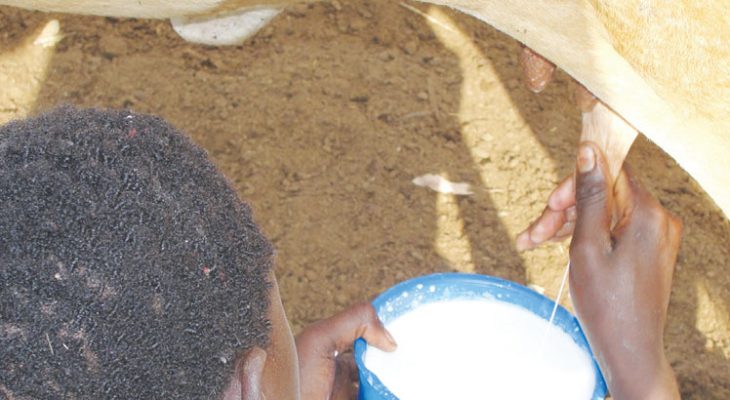
Malawi’s Dairy Sector Sees 42% Price Surge: Opportunity for Growth or Profitability Pitfall for Local Farmers?
Key Business Points
- Dairy farmers in Malawi can expect a significant increase in milk prices, with a 42% rise since April to K700 per litre, as processors aim to meet the government-set minimum price of K800 per litre.
- The price jump is not linked to imports restrictions, as the ban only applied to fresh milk, which was not being imported, and ultra-high temperature (UHT) milk imports remain unaffected.
- Farmers and processors are calling for further price adjustments to ensure the cost of production is covered, with some advocating for a price of at least K1,000 per litre to make dairy farming sustainable.
The recent increase in milk prices in Malawi is a promising development for the country’s dairy industry. According to the Malawi Milk Producers Association (MMPA), the price of milk has risen from K490 in April to K700 per litre by the end of July, with a potential further increase by October. This trend is attributed to processors’ efforts to catch up with the government-set minimum price of K800 per litre. MMPA national director Herbert Chagona describes the price trend as impressive, noting that it is good news for dairy farmers, who can expect better returns on their investment.
However, industry players are quick to point out that the price jump is not a result of the recent imports restrictions. The ban on fresh milk imports has had no impact on the industry, as UHT milk imports, which supplement local dairy production, remain unaffected. Instead, processors are increasing prices to meet the government-set minimum price, which is expected to benefit dairy farmers.
Despite the price increase, dairy farmers are still facing challenges, including the cost of production, which is currently higher than the selling price. Central Region Milk Producers Association chairperson Jessie Lunguzi notes that the current price of K700 per litre is still below the cost of production, making it difficult for farmers to sustain their operations. Lunguzi advocates for a price of at least K1,000 per litre to ensure dairy farming is profitable.
Malawi Dairy Industries (MDI) director Bob Dzombe adds that processors are respecting the farm gate price, but notes that it may be on the higher side considering consumer behaviors in the dairy industry. Dzombe emphasizes that processors also incur costs, including importing additives, which requires foreign exchange.
The potential for Malawi’s dairy industry is significant, with dairy farmers producing 66 million litres of milk in 2024, up from 61 million litres in 2023. Shire Highlands Milk Producers Association chairperson Saini Kapito notes that dairy farmers have the potential to produce high volumes of milk if motivated by better prices. With an estimated 70,000 dairy cows in the country, against an industry demand of between 150,000 and 200,000 cows, there is room for growth and investment in the sector.
As the industry continues to grow, dairy farmers and processors must work together to ensure sustainable prices that cover the cost of production. This will require a balance between meeting the government-set minimum price and ensuring that processors can remain profitable. With the right support and investment, Malawi’s dairy industry can continue to thrive, providing opportunities for wandale wa mchenga (dairy farmers) and wajasili (entrepreneurs) to grow their businesses and contribute to the country’s economic development.
What are your thoughts on this business development? Share your insights and remember to follow us on Facebook and Twitter for the latest Malawi business news and opportunities. Visit us daily for comprehensive coverage of Malawi’s business landscape.
- Malawi’s Debt Burden: A Heavy Toll on Economic Growth and Business Prosperity - December 19, 2025
- Revitalizing Malawi’s Economy: Tackling the Impact of Low Wage Relief on Business Revenue - December 19, 2025
- K417m Payout: A New Precedent for Malawi Businesses, Investors, and Economic Growth - December 19, 2025
